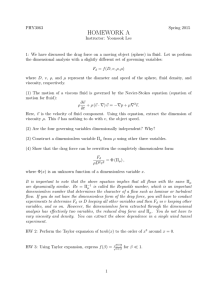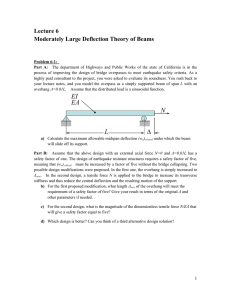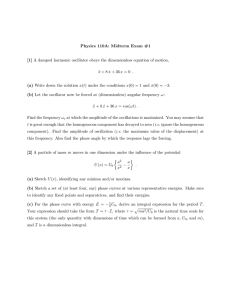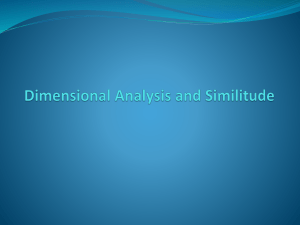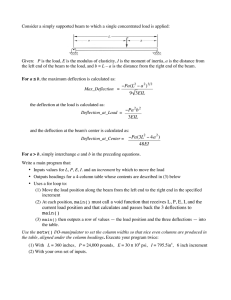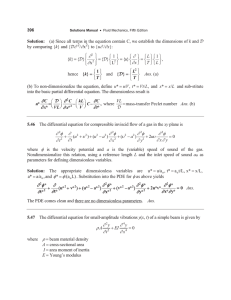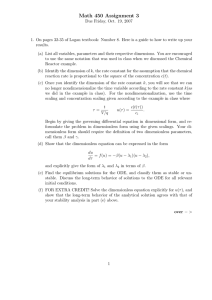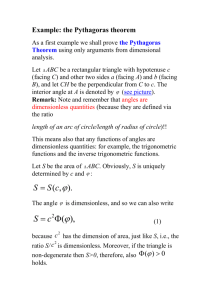Critical thinking (for engineering)
advertisement
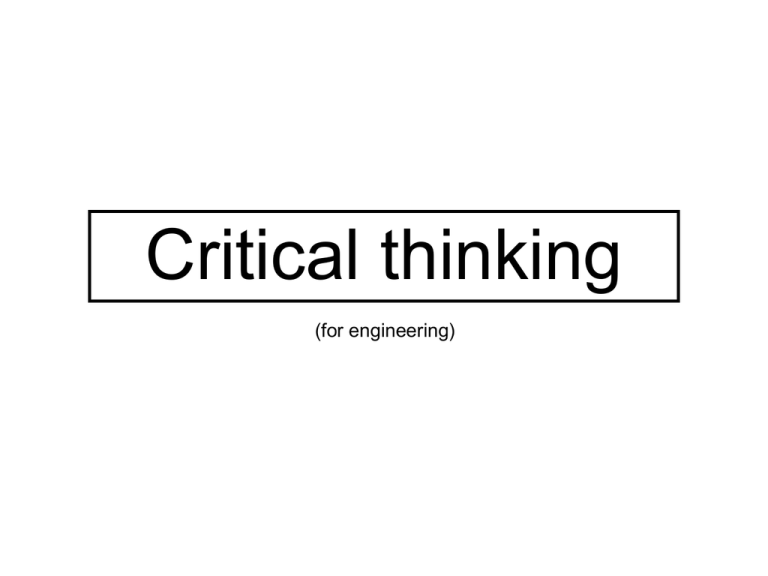
Critical thinking (for engineering) Exercise By timing the fall of a barometer, a friend measures the height of a 20-story building to be 71 feet. Is this estimate reasonable? If so, explain why. If not, give a cogent reason and suggest possible mistakes. Evaluating a result What are some tests for a result or formula? Example: falling barometer h gt 1 2 2 t Dimensions? Boundary and initial conditions? Behavior? Dependence on parameters? Special cases? Assumptions? h Exercise: drag on a body FD C D U A 1 2 FD CD U A 2 = drag force [F] = drag coefficient [-] = fluid density [M/L3] = fluid velocity [L/T] = cross-sectional area Exercise: beam deflection y x L P E I = deflection = position on beam = beam length = load (force) = Young’s modulus = moment of inertia Material E (109 N/m2) Wood 13 Aluminum 70 Steel 200 Exercise: contaminant plume VT1/ 2 C0 L ln ln 2 CS L V T1/2 C0 Cs = plume length = groundwater velocity = half-life of contaminant = source concentration = max. allowable concentration Exercise: rating curve Which curve best represents river discharge vs. river stage? Exercise: fruit flies in a jar Which is a better model? N N 0 exp( rt ) N0 K N N 0 ( K N 0 ) exp( rt ) N N0 r K = number of fruit flies at time t = initial number = reproduction rate = constant Dimensional analysis Often one can predict the form of an answer simply by considering the dimensions of the parameters. Approach: 1. List all parameters (including unknown) and their dimensions. 2. Determine the number N of parameters and number M of dimensions. 3. Determine the number of dimensionless groups (N-M). 4. Pick any M variables that do not form a dimensionless group and use them to make the other parameters dimensionless.
